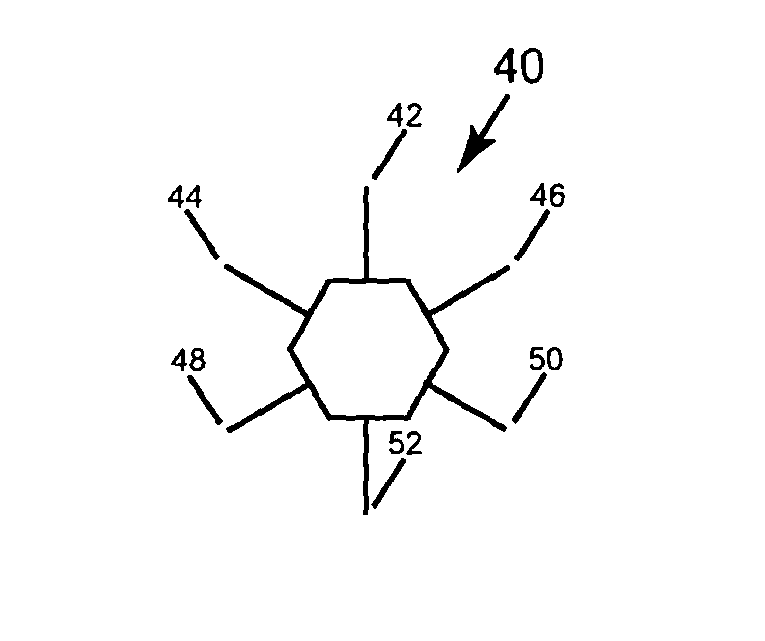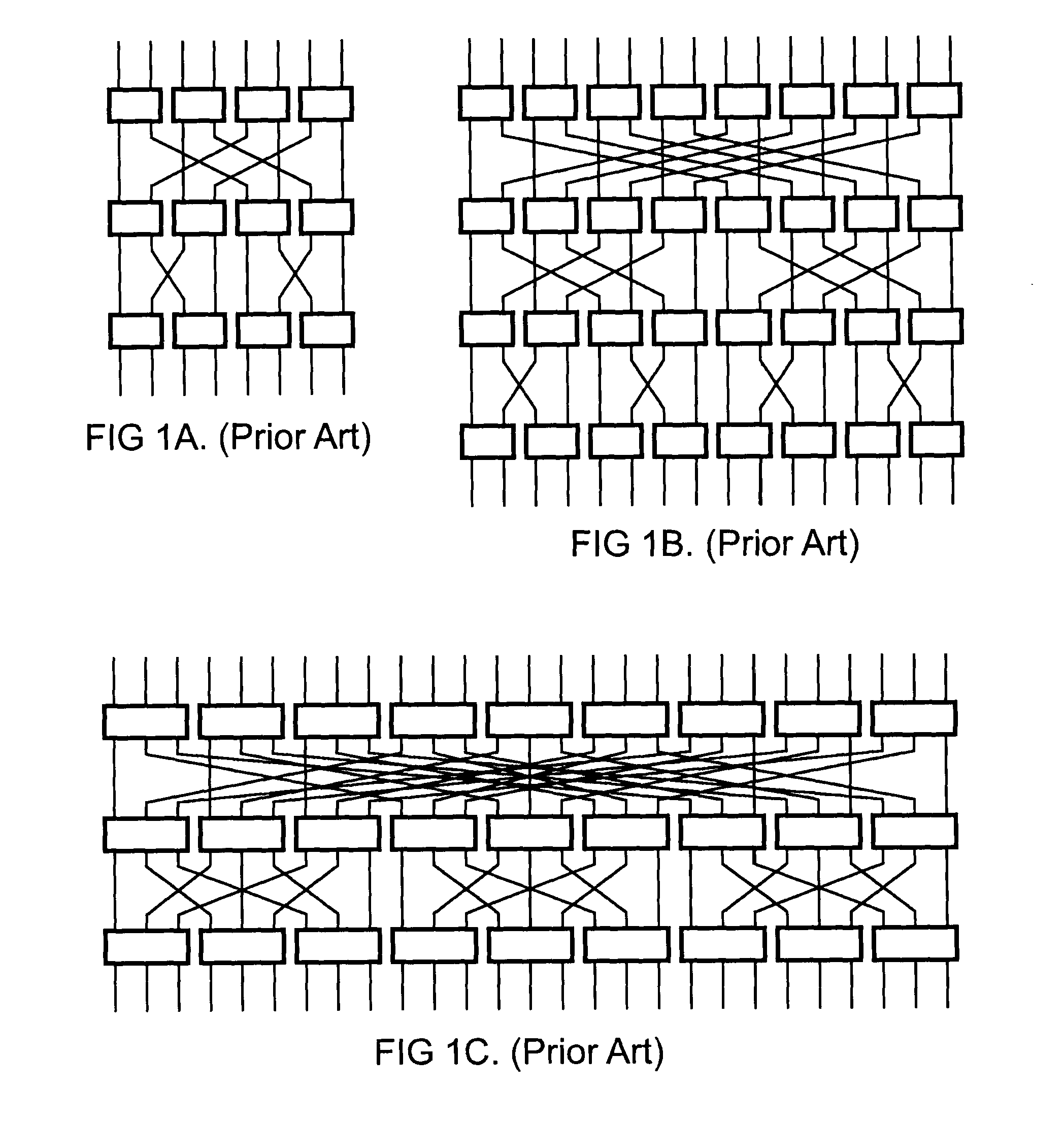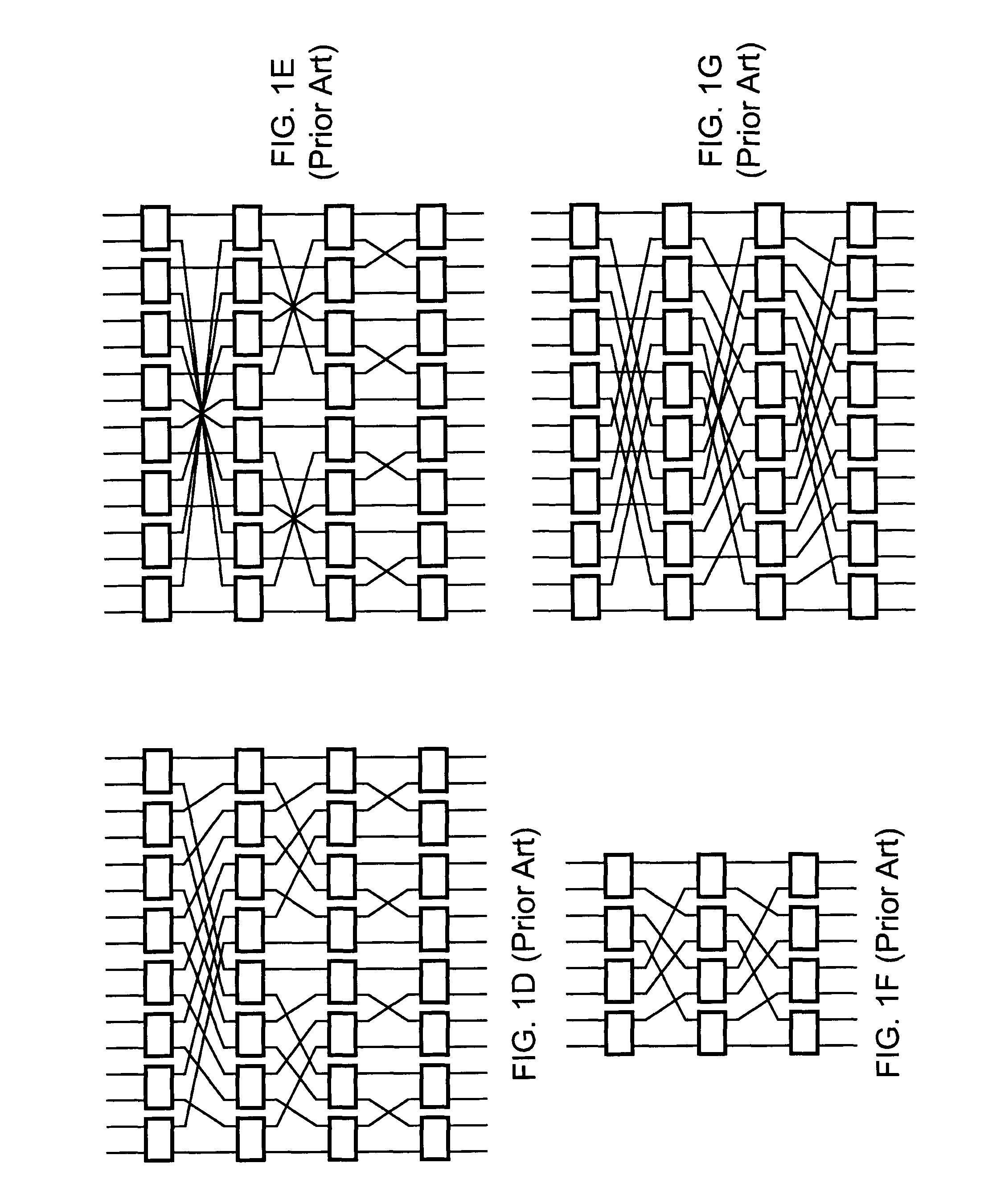Systems and methods for overlaid switching networks
a switching network and system technology, applied in the field of communication switching networks, can solve the problems of failure to compensate for any potential failure of a switching element, failure to achieve redundancy and fault tolerance, and omission of connections depicted by dotted lines, so as to reduce the distance of the average connection and reduce the average latency between two external ports
- Summary
- Abstract
- Description
- Claims
- Application Information
AI Technical Summary
Benefits of technology
Problems solved by technology
Method used
Image
Examples
Embodiment Construction
[0115]Switching elements are any type of device configured to relay traffic through different paths depending on the destination address of the traffic. Depending on the context, the switching elements as well as the systems and methods recited within this disclosure, operate with both circuit switched networks, packet switched networks, and networks comprising circuit switched elements and packet switched elements. The switching elements include but aren't limited to routers and switches, such as an Asynchronous Transfer Mode (ATM) switch or Ethernet switch. A switching element comprises ports which are an interface by which traffic is allowed to flow.
[0116]Some switching elements can further have the capability of expanding in the number of ports. In some embodiments, the switching elements can have the number of ports expanded without requiring the switching element to be powered off and in fact, the switching elements can even relay traffic during the expansion process, known as...
PUM
 Login to View More
Login to View More Abstract
Description
Claims
Application Information
 Login to View More
Login to View More - R&D
- Intellectual Property
- Life Sciences
- Materials
- Tech Scout
- Unparalleled Data Quality
- Higher Quality Content
- 60% Fewer Hallucinations
Browse by: Latest US Patents, China's latest patents, Technical Efficacy Thesaurus, Application Domain, Technology Topic, Popular Technical Reports.
© 2025 PatSnap. All rights reserved.Legal|Privacy policy|Modern Slavery Act Transparency Statement|Sitemap|About US| Contact US: help@patsnap.com



